Scientific Name: Rhus typhina
Common Name: staghorn sumac
Native Range: Eastern North America
Zone: 3 to 8
Plant type & Form: Deciduous shrub
Height: 15.00 to 25.00 feet
Spread: 20.00 to 30.00 feet
Bloom Time: June to July
Bloom Description: Greenish-yellow
Flower: Tiny, greenish-yellow flowers bloom in terminal cone-shaped panicles in late spring to early summer (June-July), with male and female flower cones primarily occurring on separate plants (dioecious)
Fruit: showy pyramidal fruiting clusters (to 8” long), with each cluster containing numerous hairy, berry-like drupes which ripen bright red in autumn, gradually turning dark red
Leaf: Large, compound, odd-pinnate leaves (each to 24” long) are bright green above during the growing season and glaucous beneath. Leaves turn attractive shades of yellow/orange/red in autumn. Each leaf has 13-27 toothed, lanceolate-oblong leaflets (each to 2-5” long).
Bark: reddish-brown hairs cover the young branchlets in somewhat the same way that velvet covers the horns of a stag
Sun: Full sun to part shade
Water: Dry to medium
Soil type & pH: average, dry to medium moisture, well-drained soils
Maintenance: Medium
Suggested Use: Naturalize
Tolerates: Rabbit, Drought, Erosion, Dry Soil, Shallow-Rocky Soil, Black Walnut
Identification notes: Find it in woodland edges, roadsides, railroad embankments and stream/swamp margins. Fruit persists through winter.
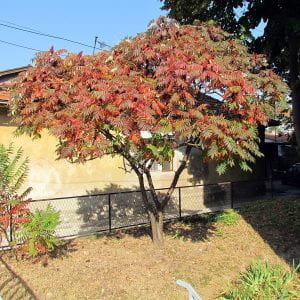
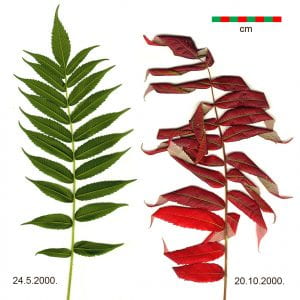
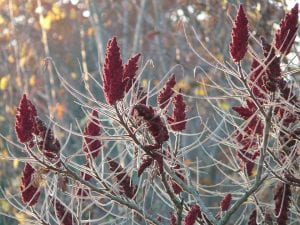
Rhus Typhina Rhus Bush Summer Green Bush Deciduous
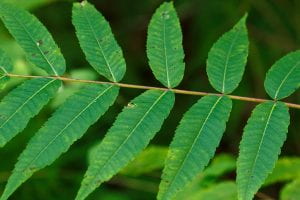
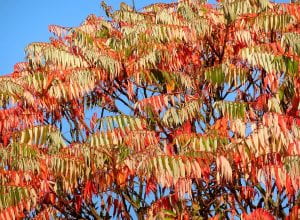
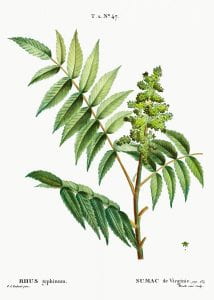
Staghorn sumac (Rhus typhina) from Traité des Arbres et Arbustes que l’on cultive en France en pleine terre (1801–1819) by Pierre-Joseph Redouté. Original from the New York Public Library. Digitally enhanced by rawpixel.

OLYMPUS DIGITAL CAMERA
